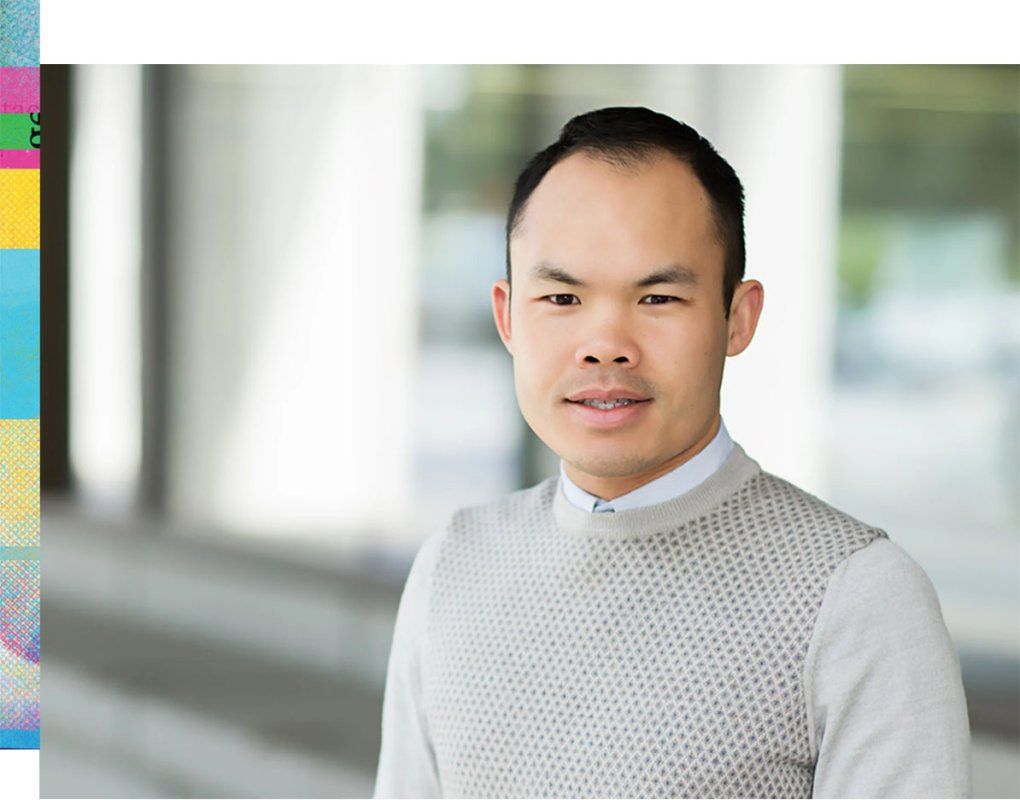
Illustration: Keith Negley
Erin Fusco loves to visit Disneyland. She’s had an annual pass since she was 18 years old and has visited hundreds of times. But there was a stretch when her regular trips to the happiest place on earth were put on hold. When Fusco, now 37, was in her 20s, she was living in the Bay Area with her boyfriend, Adam, and working as an artist in the video game industry while running her own design business.
Life was good.
But when she was 27, Fusco started experiencing symptoms that seemed abnormal, such as acute stomach pain after eating; severe nausea after one glass of wine; and floating, white stools. Something felt off, but the doctors she consulted told her not to worry.
In 2018, at age 31, Fusco finally found a doctor who took her symptoms seriously and ran a series of tests, culminating in an MRI the following year. The image showed a mass on her pancreas. It would have to be biopsied, and Fusco’s doctor sent her to UC San Francisco for the procedure.

Genetic counselor Barry Tong says part of his role is helping patients decide whether or not they want to undergo genetic testing, given all its implications.
As Fusco was waking up at UCSF Medical Center, Barry Tong, MS, MPH, a genetic counselor with the UCSF Cancer Genetics and Prevention Program, was standing next to her bed with Adam, who was by then her husband, and her parents. Tong was there to talk with Fusco about genetic testing, which he said needed to be done immediately. The testing could disclose if she had a genetic mutation that could impact her treatment.
The biopsy revealed that Fusco had pancreatic ductal adenocarcinoma (PDAC), the most common form of pancreatic cancer, which has an average five-year survival rate of 12%.
“The second the surgeons confirmed that it was pancreatic cancer, they messaged the oncology team, who then messaged us to say, ‘Hey, we need genetic testing as fast as possible,’” recalls Tong. “So her blood was drawn while she was in the recovery room. I got consent from her partner and her parents, and I literally walked the sample down the street to a genetic testing lab five blocks away.”
Genetic testing was required to meet national guidelines and, due to Fusco’s young age, to rule out a genetic mutation as the cause of her cancer. Fusco was on board with the testing from the moment she was fully awake and discussing it with Tong.
“I was actually really excited to participate in [the genetic testing] and see if [it was] going to make a difference in my treatment,” Fusco says.
Uncovering the mysteries in our genes
At its most basic, genetic testing looks for changes – referred to as variants or mutations – in a person’s DNA that may affect their health, but that simple definition belies the far-reaching and extraordinary impact such testing has on health care and health outcomes. It’s almost a magic key that can unlock the body’s secrets. Genetic testing, which is typically done on blood or saliva, can alert individuals to hidden health risks – knowledge that can help patients make better-informed decisions and that can guide clinicians as to what treatment approaches and medications will be most effective – and we are still in the early days of this medical revolution.
Genetic testing can be integrated into every aspect of health care, from preconception through senescence.”
ALEKS RAJKOVIC, MD, PHD
“Genetic testing can be integrated into every aspect of health care, from preconception through senescence,” explains Aleks Rajkovic, MD, PhD, chief genomics officer at UCSF and a Lindsay Professor of Experimental Pathology. While genetic testing already plays a pivotal role in diagnostics, Rajkovic says, “we are definitely in the early stages of taking an individual’s genome into account and using it to make preventive decisions about their health needs.”